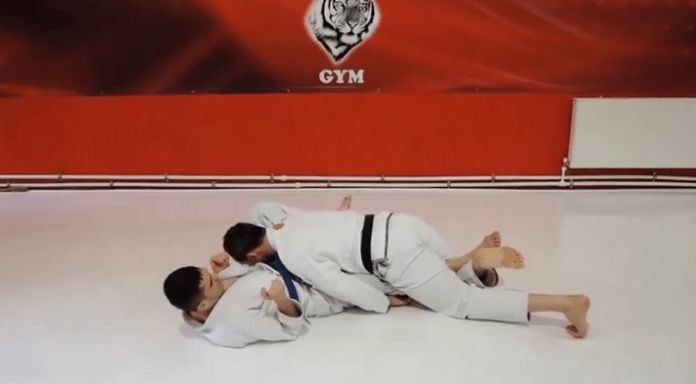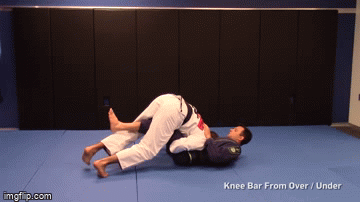
Do you like kneebars? IF you do, then you’ve probably tried to do the famous Bernardo Faria kneebar from the over-under pass, or a top half guard variation. That also means that you’ve probably failed more than you’ve succeeded with it, and you might have given up on the move altogether. I know. It has happened to me. However, as proven by Fraria himself, the Dogbar works and is one of the nastiest kneebar submission variations available in BJJ. Plus, it is a “blitz-type” move that you can set up in an instant.
With BJJ moves, it is all about details, details, and more details. As I often say in class, it is the hardest to finish a submission at the very end, just when you think you have it. This is the time when those key details and fundamental concepts and principles really do determine whether or not you’ll be successful. The kneebar submission is just like any other submission in those terms. Whether you’re going for a regular kneebar. Rolling kneebar or the Dogabbar, you’ll need two things: first, follow the main principles of the submission, and second, make sure you know all the key finishing details of the variation you’re using.
The Kneebar Submission In BJJ

The way the kneebar works is similar to an armbar – you place pressure on the knee joint with your hips, forcing it to bend in a direction opposite of its anatomical structure. For the kneebar submission to work, though, as well as any other leg lock you need to fulfill one key principle – both your opponent’s buttocks need to be in on the ground, or you should have both sides of their hip under control. Without it, you’ll be hard-pressed to finish any type of kneebar.
Finishing the “generic” kneebar requires you to understand several key mechanical details. For one, you need to have your butt touching the hips of your opponent. Second, you need to hug the leg you’re attacking with both arms, as tightly as possible to your chest. Third, you eyed to extend your spine until you can trap the foot between your head and bottom shoulder. Finally, you need to both twist and upwards with the shoulder, and push in with your hips to get a devastating break. All these details apply to any variation, whether it is the bottom kneebar or the top position Dogbar.
What is the Dogbar?
The Dogbar is a variation of the kneebar submission done as you’re passing the guard. I saw Bernardo Faria do it first, so I’ll credit him with the move, although it is unclear whether he invented it o learned it from someone else.
The Dogbar is a kneebar you do with your legs only, while you are in the over-under passing position. That of course, implies that you need to know how to do the over-under pass, in order to position yourself perfectly for a Dogbar. Check this article out, or get Bernardo’s DVD on the subject to learn everything about the over-under pass.

But of course, there’s more to it than meets the eye.
Key Details To finishing the Dogbar From The Over-Under Pass
When it comes to the Dogbar, there are plenty of little details you need to make sure are in place. Otherwise, you’ll end up with the leg slipping out, or the knee turning to the outside, which is as godo a defense as any. So, let’s look back at the basic principles and key kneebar submission details.
In order to make sure the opp[ponent’s hips are on the ground all you need to do is keep your over-under grips tight. That will make sure that the hips don’t move and lift off the ground even when your butt comes down from the pass for the Dogbar finish. However, You also need to focus on rotational control of the hips, preventing the opponent from rotating the leg to the outside trying to escape the submission. You’re over are will have to deal with this task.
When it comes to the small details, you need to think of the triangle structure you do with your legs as your arms in regular kneebar submission. The triangle needs to slide down over the calf muscle and towards the angle until you get the “sweet spot” for placing pressure on the knee. At the same time, your shoulders work the way your butt does in a regular kneebar, sticking tightly to the hips.
Finally, there are possible variations of the Dogbar that include a hybrid finish when you’re on your side like for regular kneebar submission but finish with a Dogbar configuration. Against knee shield, this means getting a scoop grip vs. the shield leg and falling to your side, while at the same time triangle the bottom half guard leg you had trapped anyway. The finishing mechanics are pretty much the same.
Summary
The Dogbar is a very powerful kneebar submission you can use to catch people off guard. When they start looking you for it, though, you’ll have to polish it up toBeranrdo Faria level if you’re to still keep tapping folks out with it. It can be done though, and if you follow fundamental kneebaring principles and the key Dogbar mechanical finishing details, you’ll have no trouble tapping out everyone with it for years to come.









































